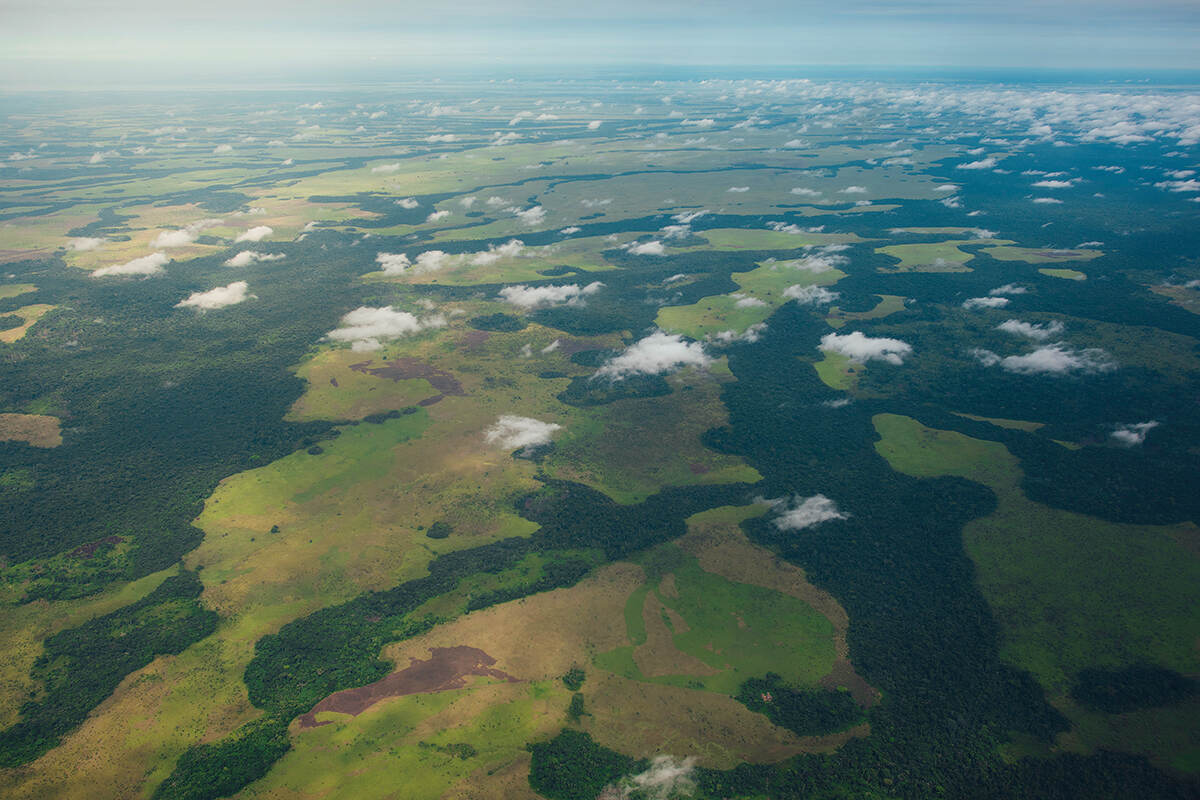
Plans to prospect for oil in the world’s largest tropical peatlands risk disturbing the Congo rainforest’s huge stores of carbon
In 2017, an international team of researchers published a paper confirming what they had suspected for some time: below the leafy canopy of the Congo rainforest lies the largest expanse of tropical peatland on Earth, where 29 billion tonnes of carbon are stored – the equivalent of three years’ global emissions from fossil fuels.
You can’t see what’s in the soil of the forest from satellites above, which is partly why its extensive peatlands remained hidden for so long. It’s only once you walk a few hundred metres away from the river that you start to enter the dense and surprisingly claustrophobic swamp, says Bart Crezee, a PhD researcher at the University of Leeds who has led several field trips to map the extent of the peatlands within the borders of the Democratic Republic of the Congo. ‘It’s fascinating that, in the 21st century, we are still finding these kinds of large ecosystems that are so little understood,’ he says.
Peat covers 16.8 million hectares of the Congo River basin, a drainage area that stretches into the territories of nine African countries. The peatlands are almost the size of England and Wales combined and, in some places, reach a depth equivalent to a two-storey building. ‘These are really dense tropical rainforests that have a high turnaround of carbon in the system, but they are also flooded, and that allows them to store large quantities of carbon in the soil,’ explains Crezee. ‘In that sense, it’s a very different ecosystem to the peatlands you get in temperate countries.’
Despite this important discovery, and a signed declaration that the peat would be protected, the government of the DRC (where two-thirds of the peatlands are located) announced in July that it would be putting 30 oil and gas blocks up for auction. Three of those oil blocks are located in the Congo basin, overlapping with one million hectares of peatland, including areas of protected land.
There’s a significant concern that exploration and prospecting for oil could cause serious damage to the peatlands, even if drilling wasn’t found to be viable. ‘Anything that disturbs the water balance, especially on a regional scale, will have a massive impact,’ says Crezee. Infrastructure development, from roads to pipelines, as well as the drilling itself, could all alter the drainage system in the area, causing the peatlands to dry out and release their carbon stores. In other tropical forests, across the islands of Borneo, Sumatra and New Guinea, land-use change for agriculture has already damaged about 94,000 square kilometres of peatlands, leading to peat fires, subsidence and carbon emissions.
There are many threats to the Congo rainforest as a whole, from logging and other resource extraction to small-scale subsistence farming and tree cutting for charcoal. But oil is the biggest threat to the peatlands, which have remained relatively undisturbed until now. Given that other attempts to protect the peatlands have failed, Crezee believes it’s time for stronger rights for local people. ‘The peat swamps are very much used by communities that live there, and they have a vested interest in protecting them, but the importance of local community land rights is something that’s traditionally been a bit neglected,’ he says.




